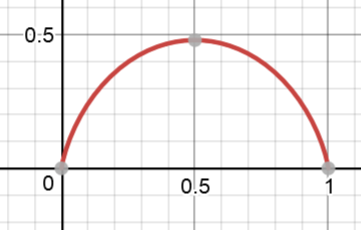This week's
Riddler challenges were kind of interesting and I'm still working on the first one. The second one is mostly a matter of patience and it's pretty clear what you're supposed to do. Regarding the first one, however...
I was stumped for a good long while until I loaded the image into MS Paint and flipped it vertically so that I could see precisely what was being graphed. I placed the flipped image in the upper-left corner so that the bottom-left corner of the original image corresponds to the point (0,0). I also noticed that some of the pixels have colors associated with them. I then used OEIS to find out exactly what the patterns were. Here are my findings:
- The first row and first column contain black pixels if they are prime numbers such that p+1 is divisible by 4. I haven't yet figured out the significance of this, as it does not fit the pattern of the other rows or columns.
- Coordinates (x,y) are black if x^2 + y^2 is prime. Incidentally, this explains why the black pixels are symmetrical about the main diagonal and why the main diagonal is white. It probably also explains why you never see five or more black pixels along any diagonal, but I'll work that out another time.
- Colored pixels are not prime. Of course, this means they're begging to be prime factored...
- Computing x^2 + y^2 for each colored pixel, we see that they each have exactly two distinct prime factors. (Two of the orange pixels and one of the purple pixels are divisible by 9 = 3^2.)
- These prime factors seem to show up repeatedly. For example, the prime factors for the orange pixels are 3^2*5, 3^2*17, 5*13, and 13*17. These can be "chained" along: 3^2 --> 5 --> 13 --> 17 --> 3^2. Unfortunately, some of the primes can't be strung along in this manner and are isolated.
And at this point, I'm stuck. Any thoughts?
Edit: All of the prime factors (or prime powers, in the case of 3^2) are multiples of 4 plus 1. Hmmm...















